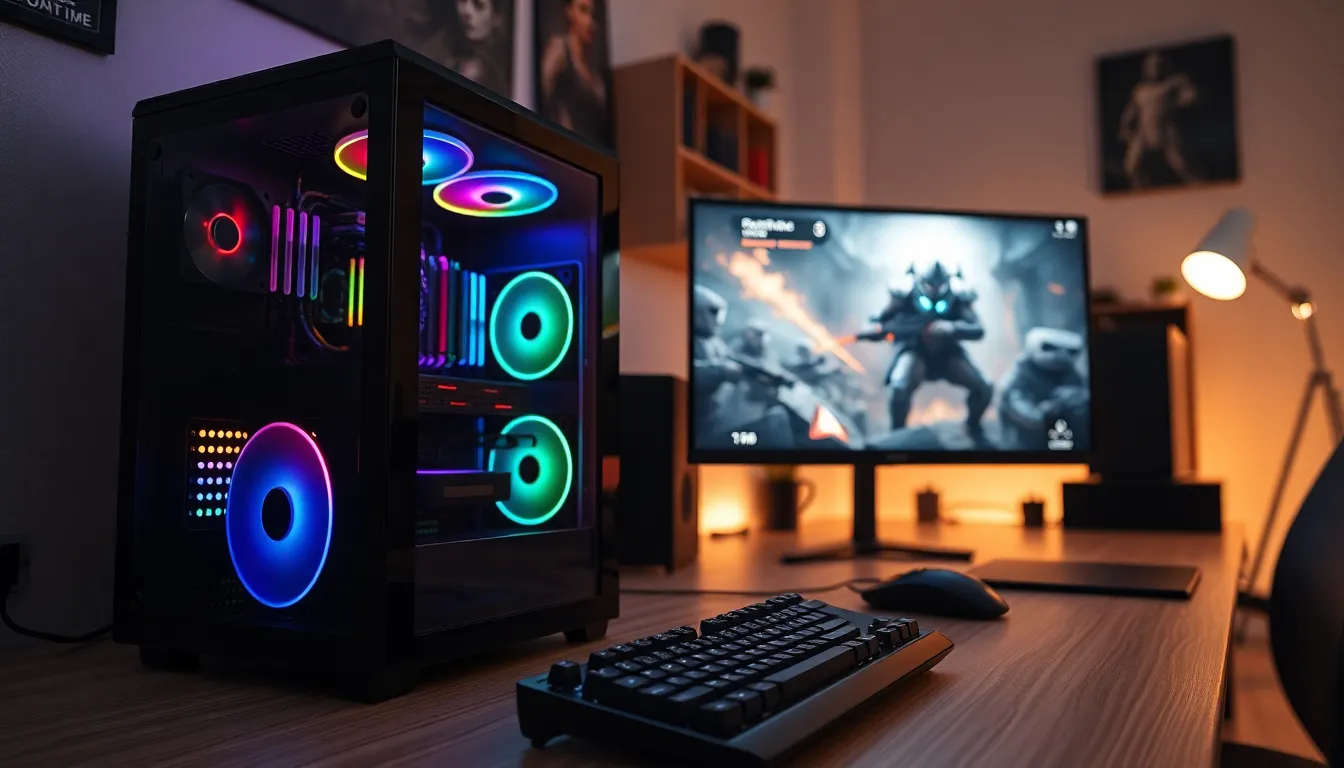In a world where every millisecond counts, low-latency hardware is the unsung hero of tech. Imagine a world where your favorite online game doesn’t lag, your video calls don’t freeze, and your data streams faster than you can say “buffering.” It’s not magic; it’s cutting-edge technology working behind the scenes to make life smoother and faster.
Table of Contents
ToggleOverview Of Low-Latency Hardware
Low-latency hardware refers to devices engineered to minimize delay in processing data. This technology plays a crucial role in various applications. User experience improves significantly with fast response times, especially in online gaming scenarios.
Processors designed for low latency enhance performance. Graphics processing units (GPUs) benefit from low-latency design by delivering smooth graphics without lag. Network interface cards (NICs) also contribute to reduced transmission times, ensuring quicker data exchange.
Massive amounts of data travel through systems daily, making efficient handling vital. To maintain high-speed communication, low-latency protocols facilitate rapid data exchange across networks. This capability is essential for video conferencing, where real-time interaction matters.
Hardware solutions improve alongside software innovations. With the integration of optimized operating systems and applications, overall system response time decreases. Solid-state drives (SSDs) possess faster read and write speeds, further reducing latency in data access.
Industry sectors demand reliable low-latency hardware. Financial trading firms require immediate access to market data, while healthcare relies on rapid diagnostics. Streamlined data processing leads to quick decision-making.
Real-world examples demonstrate the advantages of low-latency hardware. Gamers experience smoother gameplay with devices featuring advanced latency reduction technologies. Businesses benefit from improved collaboration during video calls, making communication more efficient.
The role of low-latency hardware extends across multiple fields. Speed and efficiency define its importance in enhancing user experiences and operational effectiveness. Reduced latency not only streamlines processes but also elevates overall performance.
Key Features Of Low-Latency Hardware

Low-latency hardware includes several essential features that enhance performance and user experience. Understanding these features provides insight into their impact on technology.
Speed And Responsiveness
Speed directly correlates with low latency. Devices designed for reduced processing delays offer rapid data transfer, which is crucial for activities like gaming and video conferencing. Responsiveness enhances user engagement by ensuring actions appear almost instantly. Processors and graphic cards optimized for low latency enable seamless visual experiences, minimizing lag during critical moments. A faster network interface increases communication speed, crucial for real-time data transmission.
Reliability And Stability
Reliability ensures continuous operation without interruptions. Low-latency hardware maintains stable performance under high loads, essential for finance operations and healthcare applications. Stability minimizes disruptions during critical tasks, fostering user confidence. High-quality components contribute to robust overall system performance ideals. Implementing error-correction protocols enhances reliability, ensuring data integrity even in dynamic environments. Users benefit from predictable performance during high-demand situations.
Benefits Of Low-Latency Hardware
Low-latency hardware significantly influences the performance and user experience in various applications. This technology proves essential in meeting the demands of modern digital interactions.
Enhanced Performance In Applications
Enhanced performance in applications stems from low-latency hardware, particularly in gaming and data-intensive tasks. With reduced processing delays, devices can execute commands swiftly and efficiently. Gaming, for example, benefits immensely as actions like shooting or jumping register instantly. Financial trading platforms also utilize low-latency hardware, enabling rapid transaction execution and decision-making. Network latency decreases, ensuring smooth data transfers. This responsiveness directly affects productivity, minimizing downtime during critical operations. In sectors like healthcare, rapid access to data can be life-saving. Overall, low-latency hardware strengthens application performance across multiple industries.
Improved User Experience
Improved user experience is a key benefit of low-latency hardware in various environments. Instant responses during video calls eliminate frustrating delays, facilitating seamless communication. In online gaming, smooth and uninterrupted gameplay keeps players engaged and satisfied. Users find interactions more enjoyable when lag is almost nonexistent. Real-time collaboration tools take advantage of this technology, enhancing teamwork efficiency. The confidence users gain with reliable hardware fosters greater trust in digital services. Consequently, businesses can maintain a competitive edge, ensuring that customer expectations are met and exceeded. Low-latency hardware effectively transforms user interactions for the better.
Types Of Low-Latency Hardware
Low-latency hardware encompasses various devices tailored for quick data processing and communication. Two primary categories include network hardware and computing hardware.
Network Hardware
Network hardware plays a vital role in minimizing data transmission latency. Routers, switches, and network interface cards, for instance, are engineered to facilitate rapid data exchange. High-performance routers ensure efficient traffic management by prioritizing time-sensitive packets. Switches contribute to reduced delays through optimized routing paths. With low-latency network interface cards, users experience faster connections, especially during high-demand activities like online gaming. This combination of specialized devices creates a seamless experience for users relying on real-time data transfer.
Computing Hardware
Computing hardware encompasses several elements designed to accelerate processing capabilities and reduce delays. Processors, for example, are key components that execute instructions and calculations at high speeds. Advanced graphics processing units are critical for rendering graphics quickly in gaming and other applications. Solid-state drives provide fast data access, further enhancing overall system responsiveness. Specialized chips, like those optimized for low-latency tasks, are crucial in sectors requiring swift reactions, such as finance. Collectively, these hardware components ensure reduced latency, leading to improved performance across various applications.
Low-latency hardware is essential for enhancing user experiences across various sectors. By minimizing delays and ensuring rapid data processing, it transforms activities like gaming and video conferencing into seamless interactions. The integration of high-quality components and optimized protocols not only boosts performance but also fosters trust in digital services.
As industries increasingly rely on real-time data, the significance of low-latency hardware will continue to grow. Businesses that invest in these technologies will likely see improved efficiency and user satisfaction, setting them apart in a competitive landscape. Embracing low-latency solutions is a crucial step toward future-proofing operations and delivering exceptional experiences.

